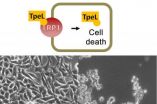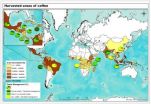(Press-News.org) While it is well known that fertility treatments are the leading cause of increases in multiple gestations and that multiples are at elevated risk of premature birth, these results are not inevitable, concludes an article in Fertility and Sterility. The article identifies six changes in policy and practice that can reduce the odds of multiple births and prematurity, including expanding insurance coverage for in vitro fertilization (IVF) and improving doctor-patient communications about the risks associated with twins.
Financial pressures provide a powerful incentive for patients and doctors to choose fertility treatments that increase the odds of multiple births and, therefore, also prematurity, according the article. Research has shown that 11 percent of twins and 36 percent of triplets are born very preterm (less than 32 weeks' gestation), compared with just 2 percent of singletons. Preterm birth places babies at increased risk of death, neurological disabilities and other health problems, and it costs the U.S. health care system more than $26 billion per year.
The conclusions and recommendations in the article are based on a project by researchers at The Hastings Center and Yale School of Medicine. The project examined the causes and consequences of multiple births after fertility treatment and included a workshop with clinicians, leaders from professional associations, patient advocates, and insurance industry representatives. The project was led by the authors: Josephine Johnston, a research scholar and director of research at The Hastings Center; Michael K. Gusmano, a Hastings Center research scholar; and Pasquale Patrizio, professor of obstetrics and gynecology at Yale and director of the Yale Fertility Clinic.
Few Americans have sufficient insurance coverage for fertility treatments. "This lack of coverage creates a moral hazard, where patients' immediate financial interests are best met by maximizing their pregnancy chances on each treatment cycle, despite the health risks and long-term costs associated with multiple gestations and births," the authors write.
Specifically, financial incentives lead patients to persist with controlled ovarian stimulation (COS), which is less expensive than IVF per treatment cycle and more often covered by insurance, but is also more difficult to control than IVF and results in more multiple births per year than IVF. The fee for a full IVF cycle is more than $10,000, and it is more than $3,000 for each embryo transfer.
The Affordable Care Act "did little for fertility patients," the article states, since its "essential benefit" provision does not mandate coverage of fertility treatment. While a few states do require IVF coverage, the article says that "the total value of the benefit may be capped at as low as $15,000 or the minimum number of cycles that must be covered may be as low as one." In addition, many of the mandates limit access to IVF to patients who have failed to achieve pregnancy with COS, leading some insurers to require as many as six cycles of it.
Patients who do undergo IVF "have a financial incentive to transfer more than one embryo so as to limit the number cycles and transfers they undergo," according to the article. Transferring more than one embryo at a time increases the chance of multiples.
The authors also expressed concern that patients are not making fully informed decisions about which fertility procedures they choose. Studies of IVF patients shows that while many patients accept treatment options associated with high rates of twins, few are fully aware of the risks to mother and babies of twin pregnancies and births. But when patients are better informed, research shows that they are more likely to choose to transfer one embryo at a time.
The authors' first recommendation is to expand insurance coverage for IVF, while also restricting the number of embryos transferred during each cycle or imposing financial incentives for single embryo transfer. The article says that such policies, which have been adopted by Connecticut and a few countries, "have dramatically reduced the rates of multiple births after IVF while maintaining good life-birth rates."
Other recommendations are:
Fast tracking from COS to IVF. Insurance policies should reduce the number of COS cycles required before covering IVF.
Changing the definition of a "cycle" for IVF treatment. Currently, one IVF cycle is defined as either a cycle in which embryos are generated and transferred or the transfer of one or more previously frozen embryos. This means that a single embryo transfer (SET) followed by a transfer of a frozen embryo from the first cycle counts as two cycles, while a double embryo transfer (DET) counts as one cycle. Fertility clinics have an incentive to favor DET over SET because it makes their per-cycle pregnancy rate higher. Broadening the definition of a cycle to include two consecutive SETs would mean that two consecutive single embryo transfers would have the same "per cycle" pregnancy rate as one DET, but with almost no multiple births.
Improving communication about risks
Encouraging patients to opt for protocols less likely to lead to multiples
Investing in research to improve fertility treatments
INFORMATION:
To interview Josephine Johnston or Michael Gusmano, contact:
Susan Gilbert, public affairs and communications manager
The Hastings Center
845-424-4040 x244
gilberts@thehastingscenter.org
Preterm births, multiples, and fertility treatment
Financial pressures lead patients and doctors to choose fertility treatments that raise the risk of premature birth, according to a new article; it makes 6 recommendations to reduce the risk
2014-04-16
ELSE PRESS RELEASES FROM THIS DATE:
Gate for bacterial toxins found
2014-04-16
Prof. Dr. Dr. Klaus Aktories and Dr. Panagiotis Papatheodorou from the Institute of Experimental and Clinical Pharmacology and Toxicology of the University of Freiburg have discovered the receptor responsible for smuggling the toxin of the bacterium Clostridium perfringens into the cell. The TpeL toxin, which is formed by C. perfringens, a pathogen that causes gas gangrene and food poisoning. It is very similar to the toxins of many other hospital germs of the genus Clostridium. The toxins bind to surface molecules and creep into the body cell, where they lead to cell death. ...
Scientists explain how memories stick together
2014-04-16
LA JOLLA—Scientists at the Salk Institute have created a new model of memory that explains how neurons retain select memories a few hours after an event.
This new framework provides a more complete picture of how memory works, which can inform research into disorders liked Parkinson's, Alzheimer's, post-traumatic stress and learning disabilities.
"Previous models of memory were based on fast activity patterns," says Terry Sejnowski, holder of Salk's Francis Crick Chair and a Howard Hughes Medical Institute Investigator. "Our new model of memory makes it possible to ...
Shade grown coffee shrinking as a proportion of global coffee production
2014-04-16
The proportion of land used to cultivate shade grown coffee, relative to the total land area of coffee cultivation, has fallen by nearly 20 percent globally since 1996, according to a new study by scientists from The University of Texas at Austin and five other institutions.
The study's authors say the global shift toward a more intensive style of coffee farming is probably having a negative effect on the environment, communities and individual farmers.
"The paradox is that there is greater public interest than ever in environmentally friendly coffee, but where coffee ...
Synapses -- stability in transformation
2014-04-16
This news release is available in German. Synapses are the points of contact at which information is transmitted between neurons. Without them, we would not be able to form thoughts or remember things. For memories to endure, synapses sometimes have to remain stable for very long periods. But how can a synapse last if its components have to be replaced regularly? Scientists from the Max Planck Institute of Neurobiology in Martinsried near Munich have taken a decisive step towards answering this question. They have succeeded in demonstrating that when a synapse is formed, ...
Scratching the surface: Microbial etchings in impact glass and the search for life on Mars
2014-04-16
Boulder, Colo., USA – Haley M. Sapers and colleagues provide what may be the first report of biological activity preserved in impact glass. Recent research has suggested that impact events create novel within-rock microbial habitats. In their paper, "Enigmatic tubular features in impact glass," Sapers and colleagues analyze tubular features in hydrothermally altered impact glass from the Ries Impact Structure, Germany, that are remarkably similar to the bioalteration textures observed in volcanic glasses.
The authors note that mineral-forming processes cannot easily ...
Cancer drugs block dementia-linked brain inflammation, UCI study finds
2014-04-16
Irvine, Calif., April 16, 2014 — A class of drugs developed to treat immune-related conditions and cancer – including one currently in clinical trials for glioblastoma and other tumors – eliminates neural inflammation associated with dementia-linked diseases and brain injuries, according to UC Irvine researchers.
In their study, assistant professor of neurobiology & behavior Kim Green and colleagues discovered that the drugs, which can be delivered orally, eradicated microglia, the primary immune cells of the brain. These cells exacerbate many neural diseases, including ...
Recycling industrial waste water
2014-04-16
A research group composed of Dr. Martin Prechtl, Leo Heim and their colleagues at the University of Cologne's Department of Chemistry has discovered a new method of generating hydrogen using water and formaldehyde. The generation of hydrogen from liquids is of particular interest when it comes to fuel cell technologies. The results of the project, entitled "Selective and mild hydrogen production using water and formaldehyde", have recently been published in the journal Nature Communications.
Among other applications, the new approach can be used to recycle industrial ...
Research uncovers DNA looping damage tied to HPV cancer
2014-04-16
It's long been known that certain strains of human papillomavirus (HPV) cause cancer. Now, researchers at The Ohio State University have determined a new way that HPV might spark cancer development – by disrupting the human DNA sequence with repeating loops when the virus is inserted into host-cell DNA as it replicates.
Worldwide, HPV causes about 610,000 cases of cancer annually, accounting for about five percent of all cancer cases and virtually all cases of cervical cancer. Yet, the mechanisms behind the process aren't yet completely understood.
This study, recently ...
New type of barcode could make counterfeiters' lives more difficult
2014-04-16
Counterfeiters, beware! Scientists are reporting the development of a new type of inexpensive barcode that, when added to documents or currency, could foil attempts at making forgeries. Although the tags are easy for researchers to make, they still require ingredients you can't exactly find at the local hardware store. Their report appears in the Journal of the American Chemical Society.
Xiaogang Liu and colleagues explain that scientists have used fluorescent and DNA-based barcodes, or tags of known composition and sequence, in attempts to develop tests for cancer and ...
A greener source of polyester -- cork trees
2014-04-16
On the scale of earth-friendly materials, you'd be hard pressed to find two that are farther apart than polyester (not at all) and cork (very). In an unexpected twist, however, scientists are figuring out how to extract a natural, waterproof, antibacterial version of the first material from the latter. Their new technique, which could have applications in medical devices, appears in the ACS journal Biomacromolecules.
Cristina Silva Pereira and colleagues explain that polyesters are ubiquitous in modern life, and not just as a practical fabric for clothing. Their durability ...
LAST 30 PRESS RELEASES:
Numbers in our sights affect how we perceive space
SIMJ announces global collaborative book project in commemoration of its 75th anniversary
Air pollution exposure and birth weight
Obstructive sleep apnea risk and mental health conditions among older adults
How talking slows eye movements behind the wheel
The Ceramic Society of Japan’s Oxoate Ceramics Research Association launches new international book project
Heart-brain connection: international study reveals the role of the vagus nerve in keeping the heart young
Researchers identify Rb1 as a predictive biomarker for a new therapeutic strategy in some breast cancers
Survey reveals ethical gaps slowing AI adoption in pediatric surgery
Stimulant ADHD medications work differently than thought
AI overestimates how smart people are, according to HSE economists
HSE researchers create genome-wide map of quadruplexes
Scientists boost cell "powerhouses" to burn more calories
Automatic label checking: The missing step in making reliable medical AI
Low daily alcohol intake linked to 50% heightened mouth cancer risk in India
American Meteorological Society announces Rick Spinrad as 2026 President-Elect
Biomass-based carbon capture spotlighted in newly released global climate webinar recording
Illuminating invisible nano pollutants: advanced bioimaging tracks the full journey of emerging nanoscale contaminants in living systems
How does age affect recovery from spinal cord injury?
Novel AI tool offers prognosis for patients with head and neck cancer
Fathers’ microplastic exposure tied to their children’s metabolic problems
Research validates laboratory model for studying high-grade serous ovarian cancer
SIR 2026 delivers transformative breakthroughs in minimally invasive medicine to improve patient care
Stem Cell Reports most downloaded papers of 2025 highlight the breadth and impact of stem cell research
Oxford-led study estimates NHS spends around 3% of its primary and secondary care budget on the health impacts of heat and cold in England
A researcher’s long quest leads to a smart composite breakthrough
Urban wild bees act as “microbial sensors” of city health.
New study finds where you live affects recovery after a hip fracture
Forecasting the impact of fully automated vehicle adoption on US road traffic injuries
Alcohol-related hospitalizations from 2016 to 2022
[Press-News.org] Preterm births, multiples, and fertility treatmentFinancial pressures lead patients and doctors to choose fertility treatments that raise the risk of premature birth, according to a new article; it makes 6 recommendations to reduce the risk





